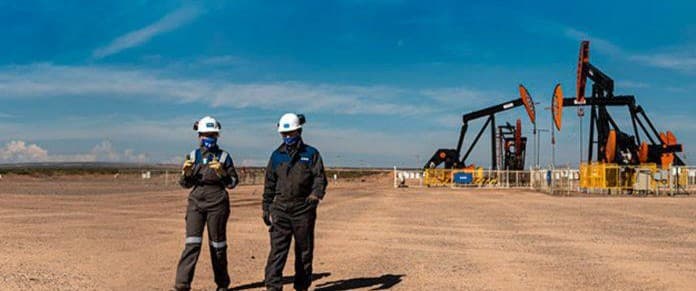Have Oil Markets Suddenly Turned Bearish?

▶Oil and gas prices have seen a bit of a correction over the last few days
Implied crude demand fell w/w for all products except jet fuel, with the key mismatch being between total crude inventories and inventories at the WTI pricing hub in Cushing, Oklahoma
▶UK and European natural gas prices fell on Thursday after Russian president Vladimir Putin ordered state-run Gazprom to begin filing storage facilities in Europe
Oil and natural gas prices have fallen over the past few days thanks to a trifecta of bearish catalysts: Warm weather, Putin’s natural gas intervention, and an agreement to resume talks in Vienna about Iran’s nuclear program. After trading above $85/barrel for the first time in seven years, Brent prices were quoted at $83.60 on Thursday while WTI prices dropped to $82.50. However, natural gas recorded the biggest fall, with prices falling 6.3% to trade at $5.81 per MMBtu.
The latest EIA report and Standard Chartered commodity update have revealed that US inventories have been rising relative to seasonal norms since late September. Indeed, the four-week average change has turned positive since early October, partly due to higher-than-normal temperatures, and currently stands at +454 thousand barrels per day (kb/d).
Oil product inventories have not yet begun their usual seasonal sharp draws, so it’s perhaps not surprising they rose 10.36 million barrels (mb) relative to the seasonal average in the latest data.
But this gets a lot more interesting down the line.
Weak demand
More worryingly, implied crude demand fell w/w for all products except jet fuel, with the key mismatch being between total crude inventories and inventories at the WTI pricing hub in Cushing, Oklahoma.
Over the past three weeks, Cushing inventories have fallen by 8.2 mb while crude inventories in the rest of the U.S. have risen by 17.9 mb. Standard Chartered says ample crude availability in the US is clearly not being reflected at Cushing. However, SC says domestic price differentials should be able to adjust enough for flows to Cushing to increase, lessening the distortion of a local shortage. The banker says its models have predicted a slight tightening into December and then a move back into significant surplus in January.
To compound the surplus in the coming year are expectations of higher Iranian exports in 2022 to moderate the upside in the current crude rally.
Putin intervenes
Until recently, the rise in US natural gas prices owed more to fears of a cold winter and the expectation of increased exports to Asia and Europe than it did to domestic fundamentals. The storage situation in the lower-48 states remains distinctly more comfortable than in Europe; in addition, while inventories are below the five-year average, with the gap narrowing.
The latest EIA storage data shows a w/w increase of 92 billion cubic feet (bcf), taking the total to 3,461bcf. The gap below the five-year average storage level narrowed for the sixth successive week, taking it to 151bcf, 23bcf less w/w and 84bcf less than in the first week of September.
However, the latest developments in the space have roiled the natural gas bull run.
UK and European natural gas prices fell on Thursday after Russian president Vladimir Putin ordered state-run Gazprom to begin filing storage facilities in the continent beginning next month.
Gazprom has allowed its Europe storage facilities to fall to unusually low levels, with critics suggesting that Russia has exacerbated an energy crisis in order to increase pressure on Germany and the EU to speed up the approval of the controversial Nord Stream 2 pipeline. Russia has denied the allegations, but serious concerns have arisen over the long-term impact of such high prices on future gas demand.
Analysts remain divided on whether demand will continue to outstrip supply in years to come.
Richard Gorry, managing director of JBC Energy Asia, thinks the current gas crisis will likely repeat itself in the future.
‘‘This will be a crisis that is reoccurring over the next three or four years — simply because we don’t have a lot of new natural gas supply coming into the market in that period. By 2025, the situation may change, but I think we definitely have a couple of years where we’re going to be looking at high energy prices,” he told CNBC’s “Capital Connection” in mid-October.
Gorry also points to the natural gas bridge, noting that gas demand has been growing “quite rapidly” as countries attempt to shift away from coal and oil, to cleaner energies since natural gas is less polluting than both coal and oil.
But James Whistler, global head of energy derivatives at shipbroking firm Simpson Spence Young, begs to differ and says prices are unlikely to remain elevated beyond this winter.
‘‘Are we going to be in an energy crisis perpetually for the next three years? Absolutely not. This is a short-term issue … come March or April next year, we’ll see much more reasonable prices starting to come through again,” Whistler told CNBC’s “Street Signs Asia” on Wednesday.
Gavin Thompson, Asia Pacific vice chairman of energy at Wood Mackenzie, is also bearish, saying that another energy crisis is likely to lead to the world falling back to oil and coal.
This is already happening as we speak: Two weeks ago, we reported that high natural gas prices could lead to a 2mb/d increase in oil demand as power generators shifted from nat. gas to oil. Although oil prices have been rallying, nat. gas prices have recently traded at the equivalent of oil at $200/barrel, making it unsustainable for electricity generating companies to continue relying on the cleaner fuel.




